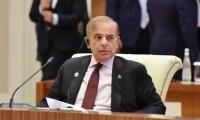One may question the need to debate the economic vision when the country is already under yet another IMF programme and prescriptions for economic management have been handed down to the government.
Yet, the statistics recently released by the Ministry of Finance on the PTI government’s economic performance in its first financial year in office are not too promising. Therefore, it might be worthwhile to debate the various contours of the economic vision for the country. This article refers to some literature (Report of conference proceedings on ‘Domestic Commerce’ GoP-UNDP 2006; Roy 2018; Chaudhry and Andaman 2014; Zaidi 2012) to illustrate the discussion.
There are at least two contrasting economic visions, if not more. One such vision calls for the economy being developed through increasing exports, value-addition, and earning the scarce foreign exchange to address the worsening current account deficit. The other vision is to develop ‘domestic commerce’ and address the domestic market needs of the vast majority to increase productivity, by leading an inclusive growth and avoiding the ‘middle-income trap’.
Those who advocate that effectively catering to the domestic market will spurt the much-needed dynamism in our economy advocate for domestic commerce. According to this view, the economic vision of promoting industrial development on the back of subsidies, concessions and protection is a ‘mercantilist approach’ to earn a surplus in foreign exchange, and it is pursued through government-led industrialization and constraining the free-flowing invisible hand of market that could have helped achieve its full potential.
According to the domestic commerce vision, cities should become centres of economic dynamism by revising the outdated zoning of urban areas, and providing space for retail, warehousing, storage as well as providing mixed-use space for entertainment and shopping areas, and vertical office/housing space. The ‘New Growth Strategy’ published by the Planning Commission in 2011 built on the promotion of free market and domestic commerce idea.
Zaidi (2012) offers a well-argued critique of the above-mentioned New Growth Strategy. To begin with, it is essential to evaluate why the ‘old growth strategy’ did not work, or what worked and what did not work? Pakistan has been growing on average at the rate of five percent growth for many decades. So clearly, some past economic policies paid off.
Pakistan’s main problem is not only a ‘software’ issue as claimed, it also faces challenges of resource gap and poor infrastructure. Moreover, one cannot ignore the power, politics and political economy perspective of an economic growth vision; so ignoring it leads to a technical view and not a holistic view. It is important to take into account income, regional/provincial inequalities through a political economy lens.
The critique also states that those advocating domestic commerce and rejuvenation of cities as economic hubs do not understand how cities in Pakistan are already the centre of creativity and innovation by propelling the informal sector (that employs the highest percentage of urban population, mainly the poor). Our cities in Pakistan need not be compared to the developed first world or second world cities. Those who have a deeper understanding of Pakistani cities, like Tasneem Siddiqi and Arif Hasan, have made a contribution to improve them for people.
In other words, as someone quoted in Zaidi (2012) said: “The informal city needs to be recognized as what it is, not encroachment, but as a part of the city where people live, work, and create something. The challenge ahead is that [sic] how to bring informal part of the city into the overall growth framework and make poor people participate in [the] overall growth effort”.
On the other hand, there is another economic vision for Pakistan that calls for value addition in the economy through export promotion. It calls to study the Asian (East Asian) economic development model to undergo this capitalist transformation. According to this view, Pakistan is still trapped in low value-addition production and export of goods at the ‘take-off’ stage. It needs a ‘coherent’ and ‘coordinated’ industrial policy to both upgrade its existing production sectors (such as textiles), as well as develop other sectors (such as engineering goods and machinery) to move to higher value-addition.
East Asian countries employed a number of policies to promote industrialization and export promotion ranging from exchange rate, tariff, credit, exports insurance policies, establishment of export-based Free Trade Zones (FTZs), attracting foreign direct investment and MNCs, and transferring technology by expanding production as the result of the collaboration. East Asian countries encouraged capital imports rather than consumer imports (which Pakistan was facilitating till the recent past), and these capital imports worked to help promote higher value-added goods for their exports. They also used free trade agreements (FTAs) to their advantage.
However, the East Asian miracle also needs to be analysed from the political economy perspective. As the literature states, it was the Japanese strong colonialism of Korea that weakened the intermediate class over there in the long run. McCartney (2012) refers to Leftwich’s work to state that there is need for a ‘developmental state’ to push for sustained economic growth. It requires the will of the ‘developmental elite’; strong, impersonal, and insulated from political pressures’ bureaucratic machinery; relatively weak non-state or civil space; better management of private economic interests; and the ability of the state to use a mix of the power of enforceability and legitimacy backed by sound performance of the economy.
It is evident that there are contrasting economic development visions. There is a need to debate them rigorously from the economic, political economy and power relationships’ perspectives. Yet, debate on such serious issues seems to be largely missing from the public discourse.
The writer is an Islamabad-based social scientist.
A health worker administers polio vaccine drops to a child during a door-to-door polio vaccination campaign in Lahore,...
Armed militants of the banned Tehreek-e-Taliban Pakistan pose for a photograph in Orakzai Agency. —...
An aeroplane of the national flag carrier of Pakistan is seen in this file photo. — AFPWhile Pakistan considers...
Representational image of a graph depicting various variables. — APP/FileInitiated by the centre and fiercely...
In this picture taken on April 16, 2023, people throng a market area during shopping in Lahore. — AFPOne of the...
Honour crimes also target men. In Sikandar Ali Lashari vs The State, SHC upheld conviction passed by ATC for honour...







